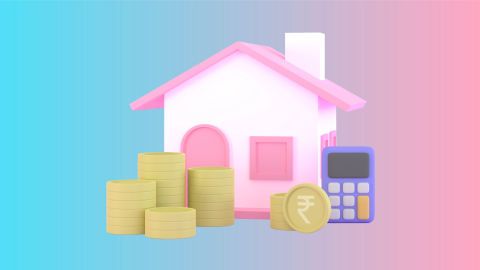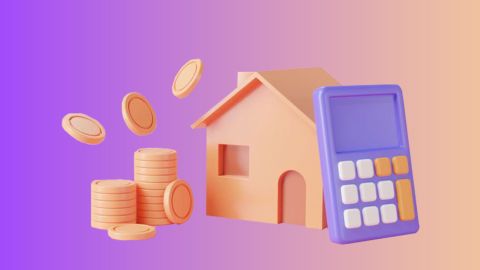In recent years, there has been a growing awareness about sustainable living and environmental responsibility in India. Homeowners and businesses alike are increasingly looking for ways to reduce their environmental footprint. One significant avenue through which this is being achieved is through the Leadership in Energy and Environmental Design (LEED) certification. This globally recognized green building certification provides a framework for healthy, efficient, and cost-saving green buildings. Interestingly, LEED certification can also positively impact financial aspects like home loans, potentially leading to better interest rates and incentives from environmentally-conscious lenders.
What is LEED certification?
LEED (Leadership in Energy and Environmental Design) is a green building certification program developed by the U.S. Green Building Council (USGBC). It provides a rating system that evaluates the environmental performance of a building and encourages sustainable design practices. LEED certification is applicable to various building types including homes, commercial spaces, and entire neighborhoods.
Benefits of LEED certification
1. Environmental Benefits
- Energy efficiency: LEED-certified buildings use less energy, reducing greenhouse gas emissions and dependence on fossil fuels.
- Water conservation: Efficient water usage systems in LEED buildings help in conserving water, a critical resource.
- Sustainable materials: Use of recycled and sustainable materials reduces the environmental impact associated with construction.
2. Economic Benefits
- Cost savings: Over the long term, energy and water savings can significantly reduce operational costs.
- Increased property value: LEED-certified buildings often have higher market value and can attract premium rents.
- Tax incentives and rebates: Governments and local bodies may offer tax benefits and rebates for green buildings.
3. Health and well-being
- Improved air quality: Enhanced ventilation and use of low-emitting materials improve indoor air quality.
- Comfort and productivity: Better lighting, temperature control, and overall environment contribute to the comfort and productivity of occupants.
The process of LEED certification
Achieving LEED certification involves several key steps:
- Registration: The first step is to register the project with the USGBC. This involves providing preliminary information about the project and paying the registration fee.
- Selection of LEED rating system: Depending on the type and scope of the project, an appropriate LEED rating system is chosen. There are different versions for homes, commercial buildings, schools, and other facilities.
- Project planning and implementation: This stage involves integrating sustainable practices into the design and construction of the building. Key areas of focus include energy efficiency, water conservation, use of sustainable materials, and improving indoor environmental quality.
- Documentation and submission: Detailed documentation is required to demonstrate that the project meets the LEED criteria. This includes providing evidence of sustainable practices and the performance of the building in various environmental aspects.
- Review and certification: The USGBC reviews the submitted documentation and conducts an evaluation. If the project meets the required standards, it is awarded LEED certification at one of four levels: Certified, Silver, Gold, or Platinum, depending on the number of points earned.
LEED certification in India
In India, LEED certification is administered by the Indian Green Building Council (IGBC), which is a part of the Confederation of Indian Industry (CII). The IGBC has adapted the LEED system to suit Indian conditions and requirements, making it more relevant and effective for local projects.
Benefits of LEED certification for Indian builders
For Indian builders, obtaining LEED certification offers a multitude of benefits. Firstly, it enhances the marketability and value of the building by showcasing its commitment to sustainability, which is increasingly becoming a priority for consumers and tenants. Secondly, LEED-certified buildings typically have lower operating costs due to reduced energy and water consumption, leading to long-term savings for owners and occupants. Additionally, LEED certification can help builders comply with regulatory requirements and access incentives and rebates offered by governments and utilities for green building initiatives.
Role of LEED certification in home loans
One interesting aspect of LEED certification is its potential impact on home loans. Financial institutions are increasingly recognising the value of sustainable buildings and may offer incentives such as lower interest rates, higher loan amounts, or preferential terms to buyers of LEED-certified homes. This not only makes sustainable living more accessible but also encourages more homeowners to consider green building practices.
The cost of LEED certification in India
The cost of obtaining LEED certification in India can vary depending on factors such as project size, complexity, location, and the level of certification sought. While pursuing LEED certification may involve upfront costs, the long-term benefits in terms of energy savings, operational efficiency, and marketability often outweigh the initial investment.
How to increase your LEED certification score?
To increase your LEED certification score, focus on improving sustainability across key areas such as energy efficiency, water usage, and materials selection. Opt for renewable energy sources, install energy-efficient systems, and enhance insulation to reduce energy consumption. Use water-efficient fixtures and implement rainwater harvesting systems.
Choose eco-friendly materials with low environmental impact and prioritize sourcing locally. Improve indoor environmental quality by using non-toxic materials and ensuring proper ventilation. Additionally, encourage sustainable transportation by providing bike racks or EV charging stations. Regularly review LEED guidelines to ensure compliance with the latest standards and maximize your certification potential.
Purposes to apply for LEED certification
Applying for LEED certification serves several purposes:
- Sustainability: Demonstrates a commitment to environmental responsibility by reducing a building's carbon footprint and resource consumption.
- Cost efficiency: Lowers operating costs through energy-efficient design and sustainable practices.
- Market value: Enhances the property’s marketability and value by meeting recognized green building standards.
- Health and well-being: Improves indoor environmental quality, contributing to healthier living and working conditions.
- Regulatory compliance: Helps meet or exceed local and national environmental regulations.
- Brand reputation: Boosts a company’s reputation as a leader in sustainability, attracting eco-conscious clients and tenants.
Explore the benefits of Bajaj Housing Finance Home Loan
Now that you know all about LEED certification and its numerous benefits, consider how it can also enhance your financial options when it comes to purchasing a green home. Bajaj Housing Finance Home Loan offers attractive financing options tailored for those looking to invest in properties. With competitive interest rates, long repayment tenures, and a streamlined application process, Bajaj Housing Finance makes it easier to turn your dream of a sustainable home into reality.
Here are a few benefits of opting for a Bajaj Housing Finance Home Loan:
- Competitive interest rates: Start your homeownership journey with competitive interest rates beginning at 7.99%* p.a. ensuring affordability and ease of repayment.
- Access extra funding with the top-up loan facility: Secure additional finances of Rs. 1 crore* or higher through our loan balance transfer facility. Use this surplus funding for home renovations, repairs, or expansions, benefiting from minimal documentation and attractive interest rates.
- Convenient repayment options: Enjoy the flexibility of extended repayment tenures of up to 32 years, allowing you to select a repayment plan that suits your financial situation. This empowers you to effectively prioritise your loan repayment without undue strain.
- Tailored loan solutions: Customise your home loan to meet your specific needs with our flexible options. Personalise your loan amount and repayment tenure, empowering you to achieve homeownership on your terms.
Apply for a home loan by visiting the Bajaj Finserv website today!




